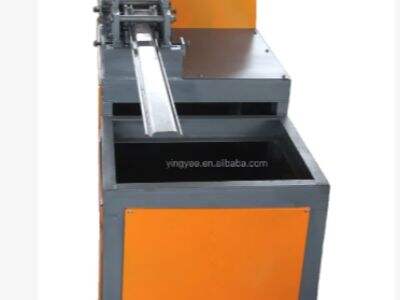Designing roll tooling for high-tensile steel is a bit challenging. Due to the complexities of working this material, increased care and consideration must be applied to complete the part accurately and efficiently. To that end, we will delve into designing roll tooling for high-tensile steel applications with a highlight on some key strategies for maximum efficiency and accuracy.
The challenge in roll tooling design using high-tensile steel
This type of steel is what we refer to as high-tensile steel, due to its extremely strong tensile strength and durability. However, those same properties also make it more challenging to work with than other types of steel. One of the primary issues in designing roll tooling for high-tensile steels is to be able to handle heavy pressure and stress, which can accompany rolling this type of steel.
Furthermore it is more skeletal and consequently flexes the most beneficial as time passes which can result in reduction of overall performance and efficiency after some time. Currently, the strength of high-tensile steel means that roll tooling designs must confirm to some properties of these materials to ensure both their durability and long life.
Roll Tooling Trajectory for High-tensile Steel Efficiency and Performance
Material selection, heat treatment and surface coatings must be examined when designing roll tooling for applications with high-tensile steel. One thing to recognize is that you better choose the right materials for the life of your YINGYEE door frame roll forming machine, particularly when it has been designed to handle high pressure and stress while working with high-tensile steel.
Another critical part of roll tooling design for high-tensile steel is heat treatment. Tempering of the steel provides numerous beneficial properties in increasing lethargy to wear and inception to define the tools and abrade. As for roll tooling in high-tensile steel applications, surface coatings can further improve durability and performance.
The key to precision and durability in roll tooling for high-tensile steel applications
For high-tensile steel applications the precision and durability of roll tooling is critical for ensuring efficient, effective product processing. When dealing with high-tensile steel, pinpoint accuracy is crucial for achieving the most precise and uniformed results possible while building tough to stand up to the job's incredibly high-pressure and tension.
New roll tooling design for processing high-tensile steel applications
Roll tooling design improvements have helped a great deal in the processing of high-tensile steel. Recent developments in roll tooling designs have resulted in a number of new technologies and processes to enhance the durability, performance and efficiency for steel roof roll forming machine applications.
An example of innovation in roll tooling design is the implementation of advanced materials, like carbide and ceramic coatings. These materials are characterized by their high-strength and wear-resistant properties, which suits them to use in roll tooling for the challenging steels used here.
Important factors for designing successful roll tooling in high-tensile steel applications
Roll tooling can be specifically designed for working with high-tensile steel material, utilizing the appropriate materials, heat treatment, surface coatings and precise and durable engineering designs to ensures that roll tooling works efficiently and reliably in processes involving high tensile steel.
In summary, roll tooling design for high-tensile steel applications needs to be well-thought-out in order to maximize effective results. With the ability to address the distinct challenges presented by high-tensile steel, maximize roll tooling for efficiency and performance and extend precision and longevity, your roll tooling designs can succeed at improving high-tensile steel processing. The roller shutter roll forming machine continues to be enhanced and this in turn has increased the strength, speed, and cost-effectiveness of roll tooling for high-tensile steel applications. Successful design of tooling for roll forming high-tensile steel applications requires attention to key considerations, which has a largely beneficial impact on the manufacturing process and result.
Table of Contents
- The challenge in roll tooling design using high-tensile steel
- Roll Tooling Trajectory for High-tensile Steel Efficiency and Performance
- The key to precision and durability in roll tooling for high-tensile steel applications
- New roll tooling design for processing high-tensile steel applications
- Important factors for designing successful roll tooling in high-tensile steel applications

 EN
EN
 AR
AR BG
BG DA
DA NL
NL FR
FR DE
DE EL
EL IT
IT KO
KO PT
PT RO
RO RU
RU ES
ES TL
TL ID
ID SR
SR SL
SL UK
UK VI
VI GL
GL HU
HU TR
TR FA
FA MS
MS GA
GA CY
CY MK
MK AZ
AZ KA
KA BN
BN BS
BS LA
LA MN
MN NE
NE MY
MY KK
KK UZ
UZ KY
KY